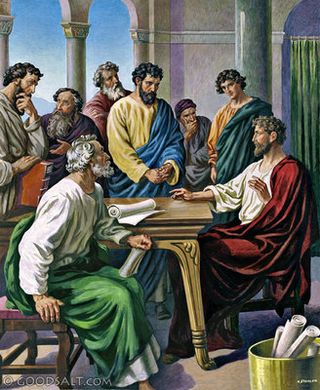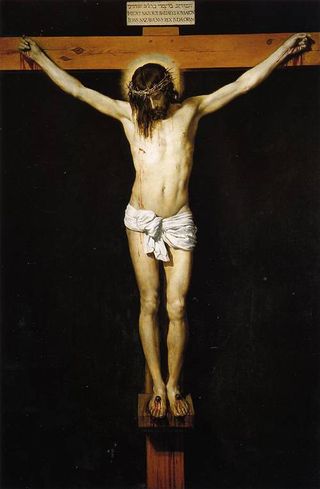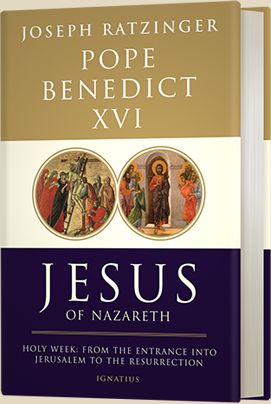
One of the distinctive Protestant principles is expressed in the slogan sola scriptura, which is Latin for “by Scripture only.” The idea is that every teaching on faith or morals must be directly or indirectly based on the Scriptures.
That leads to the common question, “Where’s that in the Bible?”
It’s an important question. In fact, it’s a question that needs to be asked about the doctrine of sola scriptura itself. Because if every teaching on faith or morals has to be based on the Bible then sola scriptura must be based on the Bible.
If it’s not, then it is a self-refuting claim and is false.
So what passages do Protestant Christians appeal to in support of sola scriptura?
Berean Christianity!
One that is sometimes cited is Acts 17, which deals with an incident that happened when St. Paul preached in the Jewish synagogue in the Greek city of Berea.
St. Luke writes:
Acts 17
Many in the Protestant community have found this an inspiring story, and some have even named their ministries after the Berean Jews. If you go online you can find all kinds of Berean churches, schools, ministries, and bookstores.
The idea is that we should imitate the Berean Jews and take a skeptical attitude of theological ideas we are presented with. Instead of just accepting them, we should search the Scriptures daily to see if what we are being told is true or not. If it’s not, then we should not accept it.
If that’s what the passage means—if it is commending the Bereans for their skeptical attitude and refusal to believe a teaching unless it can be found in Scripture—then this would be good evidence for sola scriptura.
But that’s not what it means, and it’s easy to show that.
What About Thessalonica?
You’ll notice that Acts 17:11 says that the Berean Jews were more noble than those in Thessalonica, which raises an immediate question: “What were the Thessalonian Jews like?”
If they are less noble in contrast to the skeptical Bereans, presumably they were credulous individuals who accepted what they were told without Scriptural proof.
That’s not what they were like at all. To see this, let’s back up to the beginning of the chapter, where we read:
Acts 17
[1] Now when [Paul and his companions] had passed through Amphipolis and Apollonia, they came to Thessalonica, where there was a synagogue of the Jews.
[2] And Paul went in, as was his custom, and for three weeks he argued with them from the scriptures,
[3] explaining and proving that it was necessary for the Christ to suffer and to rise from the dead, and saying, “This Jesus, whom I proclaim to you, is the Christ.”
[4] And some of them were persuaded, and joined Paul and Silas; as did a great many of the devout Greeks and not a few of the leading women.
[5] But the Jews were jealous, and taking some wicked fellows of the rabble, they gathered a crowd, set the city in an uproar, and attacked the house of Jason, seeking to bring them out to the people.
[6] And when they could not find them, they dragged Jason and some of the brethren before the city authorities, crying, “These men who have turned the world upside down have come here also,
[7] and Jason has received them; and they are all acting against the decrees of Caesar, saying that there is another king, Jesus.”
[8] And the people and the city authorities were disturbed when they heard this.
[9] And when they had taken security from Jason and the rest, they let them go.
[10] The brethren immediately sent Paul and Silas away by night to Beroea; and when they arrived they went into the Jewish synagogue.
It’s in that context that we now return to the verse where we started:
[11] Now these Jews were more noble than those in Thessalonica, for they received the word with all eagerness, examining the scriptures daily to see if these things were so.
The Real Reason the Bereans Were Praised?
So the contrast isn’t between the skeptical Bereans, who insisted on Scriptural proof of what Paul was saying, and the credulous Thessalonians, who accepted it without question.
Instead, the contrast is between the open-minded Bereans, who were willing and eager to examine the Scriptures and see if what Paul was saying was true, versus the hostile Thessalonians, who started a riot and got Paul in trouble with the authorities, even though he had proved from the Scriptures that Jesus is the Christ.
This understanding is confirmed by the following verses, where we read:
[12] Many of [the Bereans] therefore believed, with not a few Greek women of high standing as well as men.
[13] But when the Jews of Thessalonica learned that the word of God was proclaimed by Paul at Beroea also, they came there too, stirring up and inciting the crowds.
[14] Then the brethren immediately sent Paul off on his way to the sea, but Silas and Timothy remained there.
So the Thessalonians forced Paul to flee Berea, just as they had forced him to flee from their own town.
Thus it wasn’t the Bereans who were skeptical. It was the Thessalonians.
“By the Old Testament Alone?”
There is also another reason why this passage isn’t a good proof text for sola scriptura, which is this: The Christian faith contains doctrines that aren’t found in the Old Testament.
What’s why even those who favor doing theology “by Scripture alone” don’t favor doing it “by the Old Testament alone.”
While the Old Testament does contain prophecies that point forward to Jesus as the Messiah, the Christ, it doesn’t contain the whole of the Christian faith.
What the Berean Jews were willing to do, therefore, was to open-mindedly look at the Old Testament Scriptures, see if they confirmed Paul’s preaching that Jesus was the Messiah, and then go on to accept the new, Christian revelation that Paul also imparted.
And he imparted it by preaching, because the books of the New Testament were not all written yet.
The True Attitude of Berean and Thessalonian Christians
If we were to follow the example of the Bereans, we would look at whether the Scriptures we do have support a particular message and, if they do, then be willing to accept further revelation not found in those Scriptures.
We would, ironically, embrace the attitude of those at Thessalonica who did accept the Christian faith, for in 2 Thessalonians 2, St. Paul told them:
2 Thessialonians 2
[15] So then, brethren, stand firm and hold to the traditions which you were taught by us, either by word of mouth or by letter.
In other words, we would recognize the authority of all of the traditions passed on from Christ and the apostles, whether they were written or not.
And this is what the Catholic Church says we should do.
Learning More
If you’d like to learn more about these and other matters, I’d like to invite you to join my Secret Information Club at www.SecretInfoClub.com.
It’s a service I operate by email which is absolutely free. I send out fascinating information on a variety of topics connected with the Catholic faith.
The very first thing you’ll get if you sign up is an “interview” I did with Pope Benedict on the book of Revelation. What I did was compose questions about the book of Revelation and take the answers from his writings.
He has a lot of interesting things to say!
If you’d like to find out what they are, just sign up at www.SecretInfoClub.com or use this handy sign up form:
Just email me at jimmy@secretinfoclub.com if you have any difficulty.
If you’d like to listen to or download this in audio format, just use the player and links below!







